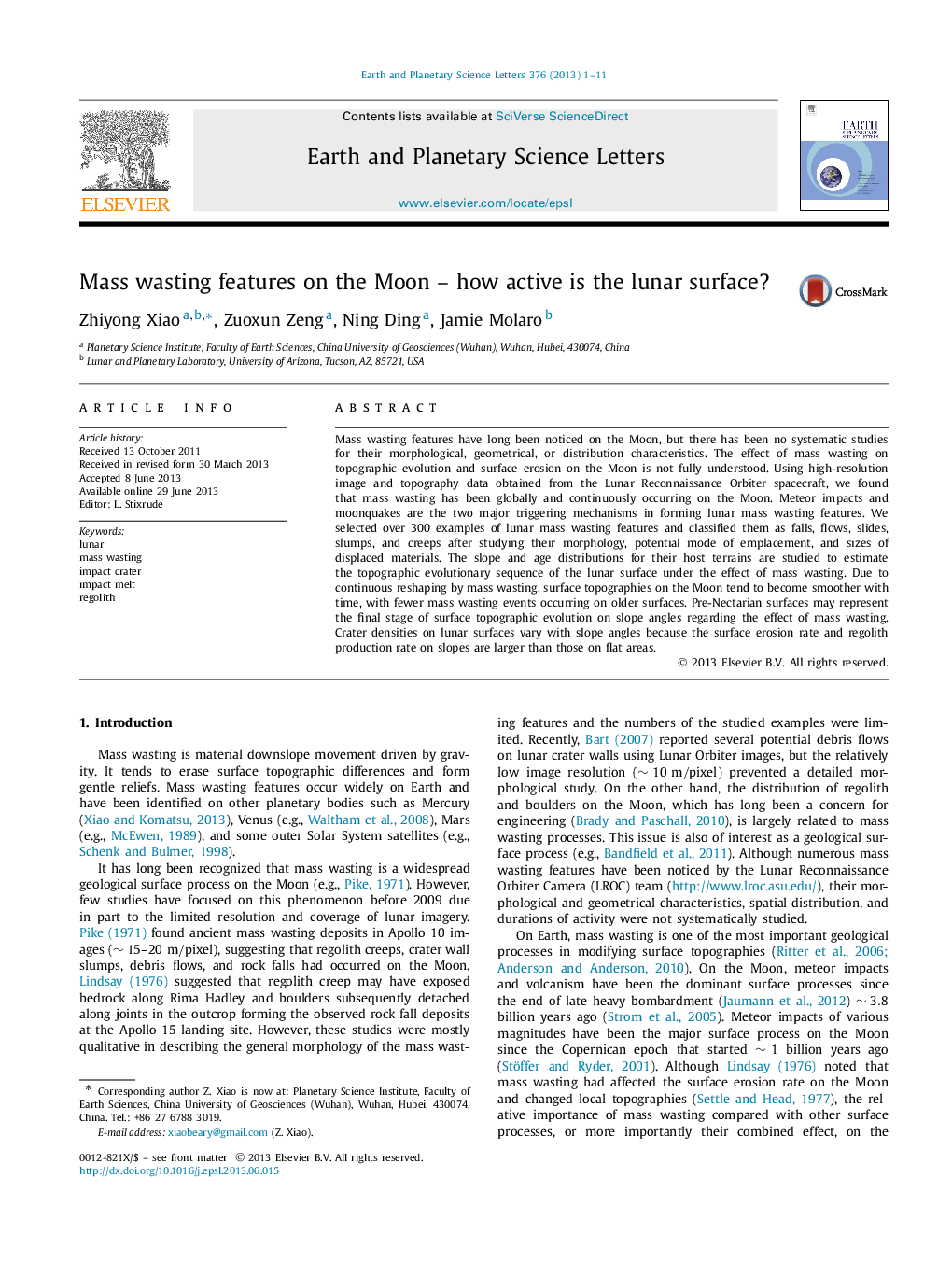| کد مقاله | کد نشریه | سال انتشار | مقاله انگلیسی | نسخه تمام متن |
|---|---|---|---|---|
| 6430083 | 1634779 | 2013 | 11 صفحه PDF | دانلود رایگان |

- LROC NAC images reveal that various mass wasting features globally occur on the Moon.
- Slopes with smaller ages and steeper slopes generally host more mass wasting features.
- Lunar surface is geologically activity due to continuous reshaping by mass wasting.
- Surface erosion and regolith production rates are larger on slope due to mass wasting.
- Pre-Nectarian surfaces represent the final evolutionary stage of mass wasting.
Mass wasting features have long been noticed on the Moon, but there has been no systematic studies for their morphological, geometrical, or distribution characteristics. The effect of mass wasting on topographic evolution and surface erosion on the Moon is not fully understood. Using high-resolution image and topography data obtained from the Lunar Reconnaissance Orbiter spacecraft, we found that mass wasting has been globally and continuously occurring on the Moon. Meteor impacts and moonquakes are the two major triggering mechanisms in forming lunar mass wasting features. We selected over 300 examples of lunar mass wasting features and classified them as falls, flows, slides, slumps, and creeps after studying their morphology, potential mode of emplacement, and sizes of displaced materials. The slope and age distributions for their host terrains are studied to estimate the topographic evolutionary sequence of the lunar surface under the effect of mass wasting. Due to continuous reshaping by mass wasting, surface topographies on the Moon tend to become smoother with time, with fewer mass wasting events occurring on older surfaces. Pre-Nectarian surfaces may represent the final stage of surface topographic evolution on slope angles regarding the effect of mass wasting. Crater densities on lunar surfaces vary with slope angles because the surface erosion rate and regolith production rate on slopes are larger than those on flat areas.
Journal: Earth and Planetary Science Letters - Volume 376, 15 August 2013, Pages 1-11